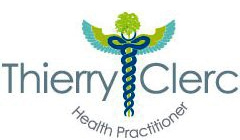Thierry Clerc practices in Cambridge (UK) as a clinical homeopath and a nutritionist. As part of your support plan, you may have been asked to stay off some types of food for the course of your treatment. In that case, this page will provide you some useful information.
Wheat-free diet
Here are some advice on what to do if you have to stop wheat during the duration of your treatment. You should be able to revert to a less rigorous diet at the end of your treatment:
Bread, Flour and Pasta: Choose brown rice, amaranth, corn, millet or quinoa as wheat-free grain options. Pastas and breads made with these grains are usually wheat-free. Buckwheat, despite its name, is gluten-free and not a derivative of wheat.
Any products labelled “Gluten-free” is also Wheat-free
Regarding fish, meat and poultry, avoid breaded versions as the crumbs most likely come from wheat-containing flour. Many processed meats such as sausage, deli meats and hot dogs contain wheat fillers, so check the labels before consuming. Try to avoid meats with unfamiliar marinades or sauces as some barbecue sauces and mustards contain wheat. Finally, avoid or be careful with ready-made sauces as many include wheat. Check for ingredients.
All other non-processed food are OK. Most health stores and supermarkets have a good wheat-free section. Contact us if you are unsure.
Click here to discover why issue with wheat and gluten are on the rise…
Gluten-free diet
Here are some advice on what to do if you have to stop gluten during the duration of your treatment. You should be able to revert to a less rigorous diet at the end of your treatment:
Follow the Wheat-Free diet below. Most other grains are fine, except for spelt and most types of oats/porridge. Oats do not contain gluten naturally but its processing can add gluten to oats products. So check for “gluten-free” oats/porridge.
Gluten-free foods include rice pizza crusts, rice chips, rice crackers, rice pasta, almond meal, coconut flour, soy flour, bean flour, cassava, sago, tapioca flour, taro flour, cornstarch, sorghum flour and guar gum. The Celiac Association lists pure cornmeal chips, popcorn, rice wafers, tortillas and potato-based chips among its list of gluten-free foods.
All other non-processed food are OK. Most health stores and supermarkets have a good gluten-free section. Contact us if you are unsure.
Click here to discover why issue with wheat and gluten are on the rise…
Dairy-free diet
Here are some advice on what to do if you have to stop dairy during the duration of your treatment. You should be able to revert to a less rigorous diet at the end of your treatment. Other terms for milk ingredients include whey, casein, natural butter flavour or words including “lacto-” or “lacta-“.
Some processed or cured meats such as sausages dairy or lactose, so check the labels carefully or ask for assistance. Some cereal brands and breads mix their cereals with milk ingredients so check the labels. Most baked goods, cakes, cookies and brownies have milk ingredients, but there are some brands that are dairy-free. Check for labels
Butter, cheese, margarine, ice cream, yogurt, cream and curds are all products made from processing milk. These days, though, there are plenty of dairy products in the market that have dairy-free versions.
Good substitutes include rice milk, oat milk, almond milk. We do not advise soy milk in general as it has shown to disturb the hormonal system when taking in great quantities. Frozen juice pops, milk-free sorbet and milk-free chocolates are dairy-free treats you can enjoy. All other non-processed food are OK. Most health stores and supermarkets have a good dairy-free section. Contact us if you are unsure.
Finally, for butter, cheese yogurt, and ice cream alternatives, you can find nuts-based or vegan alternatives. Soy-based ice cream is OK for most people in moderation.
Sugar-free diet
It is important to understand that pure sugar does not exist in nature. It has been non-existent in the Western diet before the 15th Century and most people in the world nowadays still do not need sugar. Here are some advice on what to do if you have to stop sugar during the duration of your treatment. You should be able to revert to a less rigorous diet at the end of your treatment:
Instead of sugar, you can add spices to your food as they provide a lot of taste, and also help balance your internal sugar balance. Ginger, liquorice, allspice and cinnamon are sweet-tasting spices that may make your oatmeal or plain yogurt taste sweeter. Adding a handful of raisins to your meal may also help tame your sweet tooth without giving into the temptation of sugar. Other “better” sweeteners include xylitol, stevia, or dried fruits. We do not advise the use of fructose or artificial sweeteners.
More and more food has hidden sugar, so always check the ingredients or ask. A list of culprits with lots of hidden sugar are: salad dressings, prepared sauces, processed/prepared food
Eat fruit for the dessert! Instead of banishing all sweet things from your refrigerator, choose naturally sweet foods, like fruit, that do not have any added sugar. Enjoy an ice pop made from 100 percent fruit juice, or pour orange juice into an ice cube tray and place it in the freezer to make your own!
When your body has been acclimated to eating sugar every day, it may be challenging to break the habit If you can not stop at all, then try and reduce slowly and gently the quantity by having smaller portions for a couple of weeks. Contact us if you are unsure.

